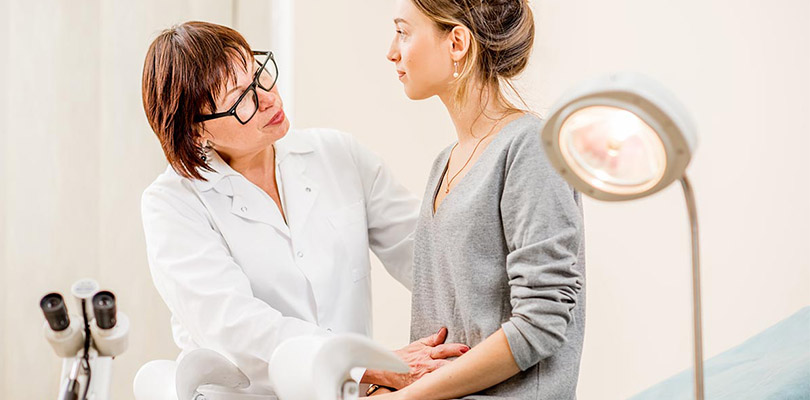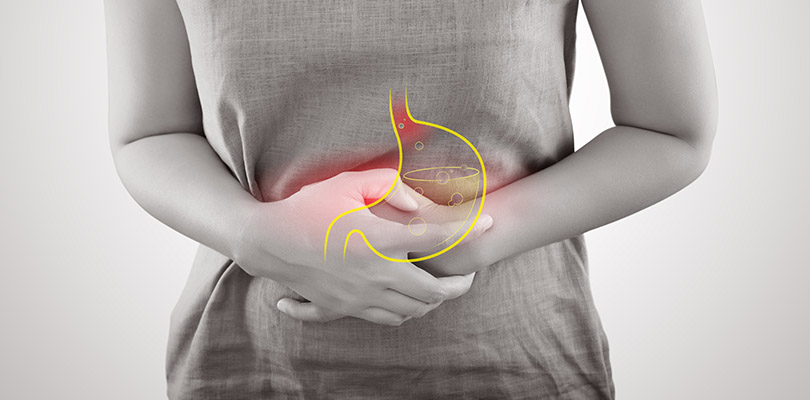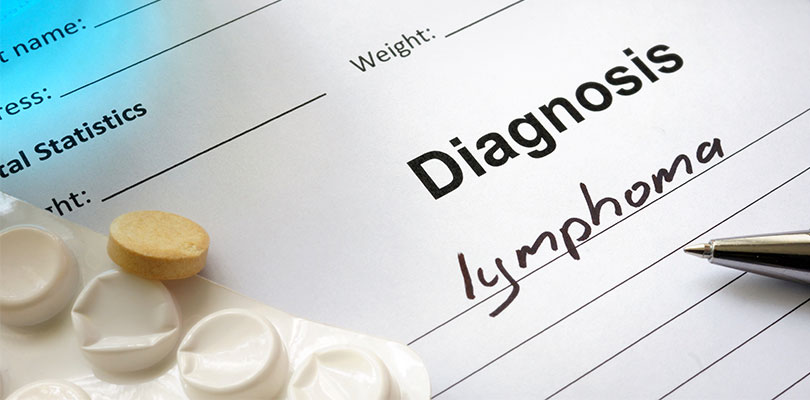What Are the Different Types of Breast Cancer?
Breast cancer is a disease of the breast tissue which can originate from either the ductal epithelium or its lobules. The abnormal cells in the breast grow out of control and divide in an uncontrolled way; after a while, they start to form a growth, referred to as a tumor. There are different types of breast cancer.
Causes of Breast Cancer
A woman’s breast is composed of connective tissue, fat and lobules. The lobules are glands that produce milk for breastfeeding and small ducts carry the milk to the nipple. Breast cancer most commonly starts in the inner lining of these ducts or in the lobules. Cancer causes the cells of the affected area to multiply uncontrollably, resulting in excessive growth that uses all of the nutrients and energy, and takes over healthy cells, resulting in breast cancer.
How Does Breast Cancer Spread?
The cancer cells can get into the blood or lymph nodes giving the cells a higher chance to travel through the lymph system, allowing the cancer to spread to other areas of the body.
Signs and Symptoms of Breast Cancer
The first sign of breast cancer is usually the discovery of a lump or thickened area of breast tissue. The lump is usually hard, painless and has uneven edges. Other symptoms you may notice include:
- Change in breast size or shape
- Swelling of the whole breast
- Breast or nipple pain
- A change in appearance of your breast, such as becoming flaky, thickened and red
- Nipple discharge (other than breast milk)
It’s important to know what your breasts normally feel and look like. Be aware of any breast changes and if you notice something out of the ordinary, consult with your doctor.
Diagnosis of Breast Cancer
There are several diagnostic tests and procedures to help confirm a diagnosis of breast cancer.
Step 1: Breast Exam
The doctor will check and examine your breast lump, body and other symptoms. During this session, you may need to sit or stand with your arms in different positions, such as at your sides, or above your head.
Step 2: Imaging Tests
Imaging tests are used to help doctors detect breast cancer. The doctors usually use:
- Mammogram. Mammograms are the most common imaging device that doctors use to screen for breast cancer. It can help doctors detect any lumps or abnormalities by producing images.
- Ultrasound. Different from a mammogram, an ultrasound is a scan that uses sound waves to help doctors look for tissue abnormalities.
- Magnetic resonance imaging (MRI). If an abnormality is visualized on a mammogram or ultrasound, an MRI is usually recommended. The doctors also use MRI for those at higher risk of breast cancer.
- Biopsy. In this test, doctors extract a sample of tissue to send for laboratory analysis. This diagnosis is used to establish the size of tumor and the degree of spread.
Treatment for Breast Cancer
If cancer has been detected and it is confirmed to be breast cancer, the doctor will offer treatment based on various factors including:
- Cancer type and stage
- The sensitivity of the patient
- Health, referral and age issues
Here are some common treatments that can be used for breast cancer.
Surgery
There are five types of surgery, including mastectomy, lumpectomy, sentinel node biopsy, axillary lymph node dissection and reconstructions. Determining the type of procedure depends on patient preference, tumor type and stage.
Radiation Therapy
Radiation therapy is usually used for approximately a month after surgery to kill any remaining cancer cells.
Chemotherapy
If there is an elevated risk of spread, doctors will recommend chemotherapy to kill cancer cells. There are two different kind of chemotherapy:
- Adjuvant chemotherapy, for chemotherapy after surgery to kill remaining cancer cells.
- Neoadjuvant chemotherapy, for chemotherapy before the surgery to shrink the tumor.
HPV cancer symptoms may not cause any signs, but if the cancer is advanced you may experience pelvic pain, abnormal bleeding, and other symptoms.
Hormone Blocking Therapy
To prevent hormone sensitive breast cancers from returning, the doctors will use hormone blocking therapy. This therapy is the best choice for a person who is not suitable for surgery, chemotherapy, or radiation.
Common Types of Breast Cancer
There are several different strains of breast cancer. Here are the most common types of breast cancer.
Invasive Ductal Carcinoma
This kind of breast cancer is also known as infiltrating ductal carcinoma. The cancer “invades” the surrounding breast tissues, growing in the milk duct and spreads or metastasizes to the other parts of the body.
Invasive ductal carcinoma is the most common type of breast cancer accounting for 80% of cases. Although, this cancer can affect women at any age, women over the age of 55 have the highest chance of being affected.
The symptoms of Invasive ductal carcinoma include:
- Lumps around the breast or armpit
- Breast skin feels thickened
- Skin irritation and changes
- Nipple discharge
- The position of nipples changes
If you experience any of these symptoms your doctor will likely perform the following tests: mammogram, ultrasound and a biopsy.
After being diagnosed, depending on the spread and size of the tumor, you may need to receive one of the following treatments:
- Chemotherapy
- Radiation therapy
- Hormonal therapy
- Surgery
- A combination of the treatments
Invasive Lobular Carcinoma
This cancer is the second most common breast cancer accounting for about 10% of cases.
Invasive lobular carcinoma begins in the milk-producing lobules, the ducts that empty out while they carry milk to the nipple. The cells of invasive lobular carcinoma are hard to see because the cells stream through the breast tissue. Some patients need to undergo an MRI for better visualization of the affected area.
With invasive lobular carcinoma, the symptoms are often the same as invasive ductal carcinoma. However, there may be additional symptoms including:
- An area of thicker tissue
- Nipples may be inverted
As with the symptoms, the diagnosis tests and treatments are similar to invasive ductal carcinoma.
Triple Negative Breast Cancer
Triple negative breast cancer usually affects younger people, African American women and those with a BRCA1 gene mutation are particularly susceptible. This uncommon type of breast cancer is a cancer whose cells test negative for the following receptors:
- Estrogen
- Progesterone
- Hormone epidermal growth factor receptor 2 (HER-2)
Triple negative breast cancer has similar symptoms to other breast cancer types, but this cancer can be more aggressive. Because of that, the treatments are more difficult.
These cancers are also more likely to spread around the breast and may come back after treatment. Typical treatments for breast cancer are often ineffective, but chemotherapy still works, especially when the cancer is in the earlier stages.
Inflammatory Breast Cancer
Inflammatory breast cancer is a rare type of cancer that is aggressive, spreads quicker and grows faster than others. Inflammatory breast cancer is a cancer whose cancer cells infiltrate the skin and block the lymph’s on the breast.
The early symptoms may start with:
- Persistent itching in breast area
- Reddening of the breast
- Warmth of breast
- The nipple is flattening or turned inward
The biopsy will be performed during the diagnosis to remove suspicious breast tissue. When the person is diagnosed, the doctor will order some additional treatments, such as a breast MRI, to obtain more information about the tumor. Typically, inflammatory breast cancer requires an aggressive treatment that may combine chemotherapy, radiation therapy, surgery and hormone treatments.
Metastatic Breast Cancer
This cancer is classified as stage 4 breast cancer. Metastatic breast cancer occurs in a breast that has “metastasized” or spread to another part of the body (usually the brain, bones, lungs and liver).
Symptoms of metastatic breast cancer vary depending on the spread of the disease, but can include the following:
- If the cancer spreads to the brain, you might feel a worsening headache, memory loss, pain, vision disturbance, behavioral or personality changes.
- If the cancer spreads to the lungs, it may cause an inability to take full breaths, chest pain, poor appetite, fatigue, weight loss and coughing.
- If the cancer spreads to the bones, it may cause a progressive and severe pain, fractures, and swelling.
- If the cancer spreads to the liver, it may cause swelling of the feet and hands, fatigue, nausea, appetite loss, abnormal high enzymes on the liver.
After the diagnosis of metastatic breast cancer, the same treatments are again available, including radiation therapy, chemotherapy, surgery, hormonal therapy and targeted therapy.
In Conclusion
Getting a diagnosis of breast cancer can be scary, but with advancement in screening and treatment, the survival rates have improved dramatically in recent years. While there is no way to prevent breast cancer, there are certain lifestyle adjustments that you can make to minimize your risk, including eating a healthy diet, regularly exercising, minimizing alcohol consumption and maintaining a healthy weight.







